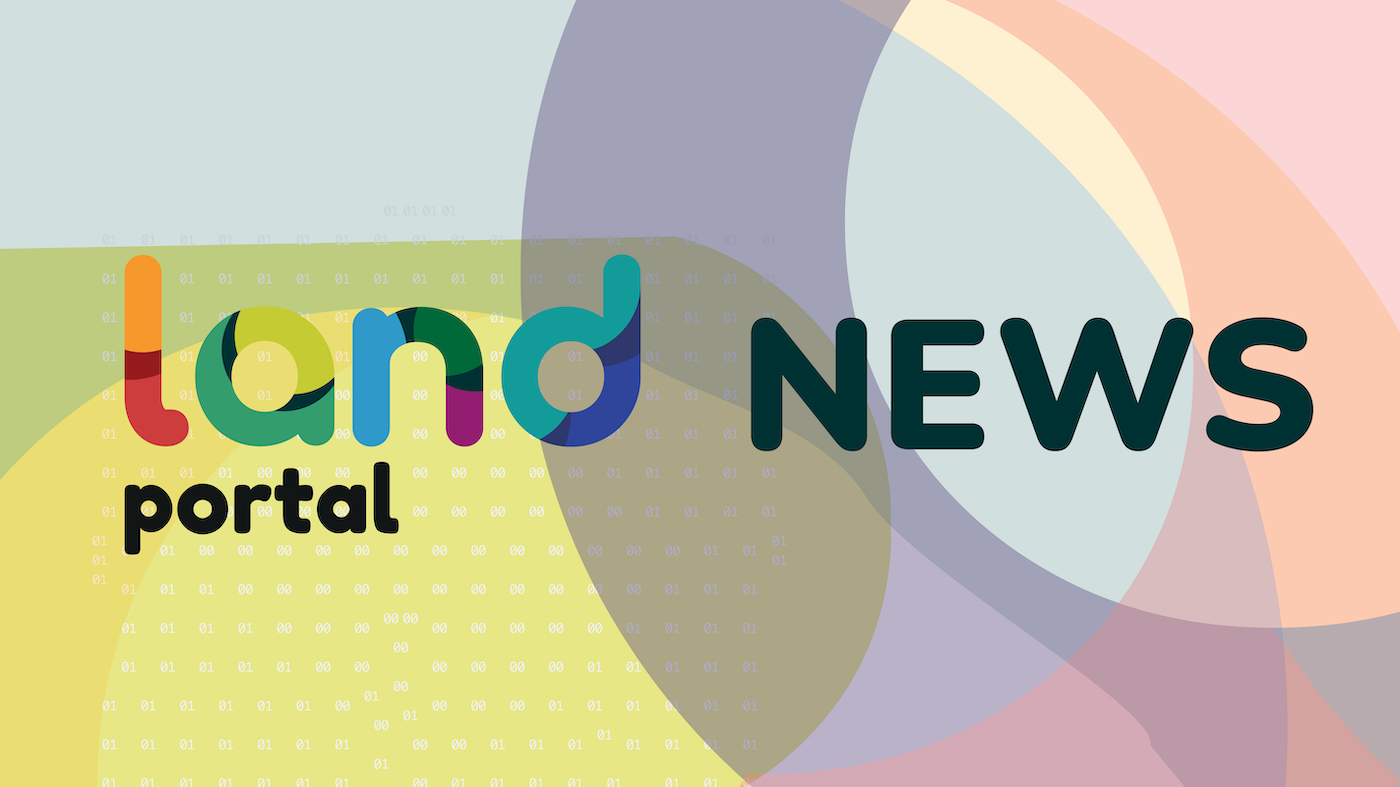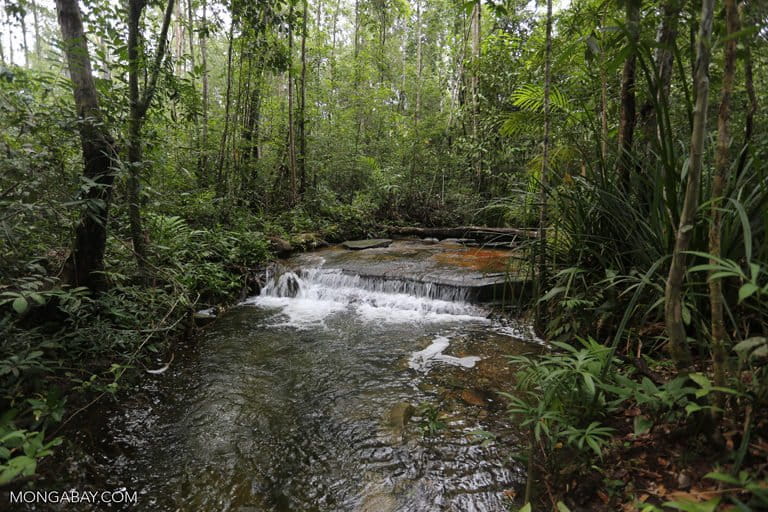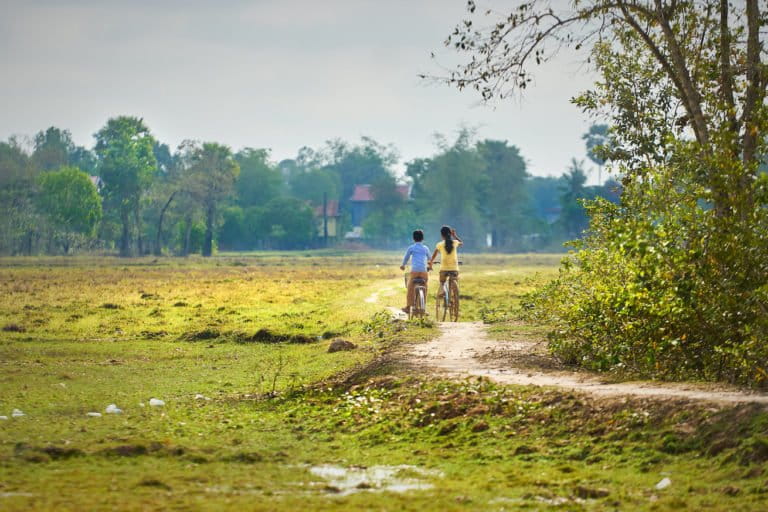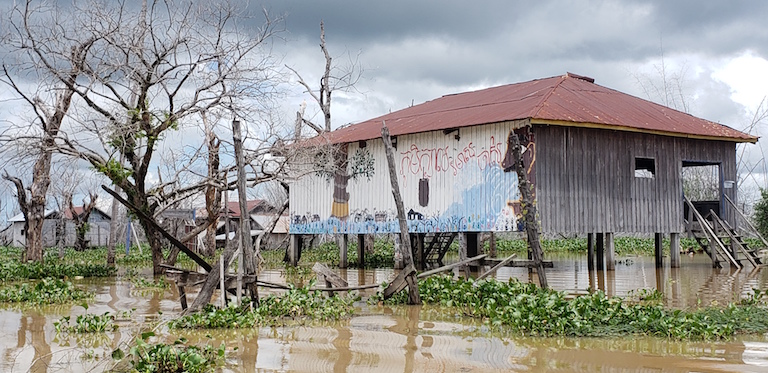Cambodia puts its arduous titling process for Indigenous land up for review


- Since 2009, Cambodia has had a legal process by which Indigenous communities can obtain legal title to their traditional land.
- Of around 455 Indigenous communities in Cambodia, 33 have been granted land titles.
- People who have engaged in the Indigenous land titling process say it is time-consuming and arduous, and that even successful claimants are often granted title to just a fraction of their customary land.
- This year, Cambodia has launched a review of its communal land titling process. Even people involved in the review are unsure what prompted it or what impacts the review might have.
Ethnic Kui Indigenous people have for generations mined the mountains and streams of Cambodia’s Romtom commune for their livelihoods. But those traditions shifted as Delcom, a Malaysian-owned gold-mining company, began digging up the land in the early 2010s and confronting artisanal miners with armed guards. Miners at that time said their peers had gone abroad to seek new jobs, while those who remained were broke.
Several years later, the community faced new pressure from Delcom. The company began stretching itself further, eating into farmland, and again choking the Kui communities’ livelihoods. With renewed frustrations, residents spoke to environmental activists; during the interviews one woman named a person she was told was in charge of the area, without knowing that the man is a powerful general named in several notorious land disputes.
Unbeknown to the residents living around it, the Delcom gold mine had been transferred from a Malaysian conglomerate to Chinese owners, a transaction whose details remain scant.
Under Cambodian law, a mechanism exists that should allow the Kui to make a case to own and use land they have been occupying for generations. However, as of late 2020, the Kui residents are still fighting for the rights to their land, and, like most of Cambodia’s Indigenous communities, have not successfully made a legal claim.
In reality, Cambodia’s strong laws for protecting Indigenous land are bogged down by a time-consuming process and blocked by land concessions.
This year, as land prices surge and the country is extracting private land from protected areas, the Cambodian government is reviewing its Indigenous communal land titling application process, and Indigenous land use in general. What motivated the reevaluation, and how Indigenous land rights might change as a result, is still opaque. But Indigenous NGOs and advocates say that truly protecting Indigenous cultures and their ties to Cambodia’s forests would require fundamental changes to the process of registering and protecting Indigenous land rights.

The process for Indigenous land titling
Cambodia agreed to the U.N.’s declaration on Indigenous rights in 2007, which explicitly grants Indigenous groups authority over land they’ve held “by reason of traditional ownership,” to use or develop as they please. Two years later, the government enshrined the right of Indigenous groups to hold their traditional land, and the procedure for doing so, into its laws.
Since then, 33 communities have received land rights, or just 7% of the total 455 Indigenous communities known in Cambodia, according to data compiled by Cambodian nonprofit network NGO Forum.
The process is arduous. Before an Indigenous village and the NGO assisting it can begin surveying land to claim ownership, an individual Indigenous community has to gain recognition from its provincial authorities and Cambodia’s Rural Development Ministry, and then register legally with the Interior Ministry. About a third of Cambodia’s Indigenous communities have done so, according to NGO Forum data.
The next step is mapping and designating areas for homes, rotational farmland, ancestral burial grounds, and spirit forests and mountains. Usually a local NGO steps in to assist with GPS coordinates and creating the map. They then present the map to the Land Ministry, which confirms the area, ensures it doesn’t overlap with other land users, and finally issues the title.
Indigenous land titles also come with a condition to protect a piece of the forest, usually tied to the community as ancestral burial sites and spaces of spiritual significance.
Currently, 86 communities have applications in the works, while an additional 33 have received land titles in the end, according to NGO Forum data.

Cambodia’s conflict-ridden land records
All property records in Cambodia were destroyed during the 1975-1979 reign of the Khmer Rouge, part of the totalitarian leaders’ efforts to revoke private property and establish Cambodia as a radical, isolated agrarian state.
Cambodia’s Land Law was finally restored in 2001, but land ownership remains ambiguous and many, particularly in the provinces, have “soft titles” from the local government, rather than sturdier “hard titles” granted by the national government. Others live without land titles at all, since proving ownership is complex, and generally relies on proving a family or community has occupied land for the long term.
Both Indigenous and non-Indigenous land ownership nationwide has also been complicated by an economic land concession campaign that began in the early 2000s, in which the government granted huge swaths of public land to private companies. Though the program was suspended after receiving sharp international criticism for deforestation and land grabbing in and around concessions, the government has continued to grant huge territories with little public explanation.
Cambodian Prime Minister Hun Sen announced last July that people who can prove they’ve lived in a protected area for more than 10 years can be granted land titles, which spurred a rapid surveying campaign in Mondulkiri province in the second half of the year and revealed a number of illegal land grants issued by local and national officials.
Simultaneously, land prices are rising throughout the country, with land in Mondulkiri’s city center costing as much as $1,500 per square meter (about $140 per square foot), according to some real estate agents, and provincial land also increasing in value as the country develops more tourism projects.

Pros and cons of the current process
Pheap Sophea, a natural resources governance program manager for the NGO Forum, said Cambodia’s Indigenous land titling program has been successful in working to “preserve traditional culture, good habits, protect land security and improve the livelihoods of Indigenous communities,” both for the communities who received the land and those in the process. However, he says several aspects of the process need to be simplified and clearly communicated to the Indigenous groups who are in the process of or eligible for receiving land titles.
Grassroots NGOs supporting Indigenous communities have more pointed critiques.
Yun Lorang, coordinator for Cambodia Indigenous People Alliance, says the process takes too long, at least three years.
“We don’t have an experience of success yet,” he told Mongabay.
Lorang says the land titles, when approved, do secure some of the land that Indigenous communities hold, but never cover the whole area they’ve been using for decades. The law allows only state-owned land to be allocated as Indigenous land, and limits the amount of area that Indigenous groups can use for spiritual purposes: 7 hectares (17.3 acres) each for spirit forest area and for ancestral burial ground.
“Sacred and burial land are bigger than 7 hectares,” Lorang said. “Based on customary rules and practices, community land’s size is more than 5,000 hectares [12,400 acres], but the government offers only 1,000 to 1,500 hectares [2,500-3,700 acres].”
Indigenous land claims often overlap with company developments, and when that happens, it’s usually the economic interest that wins out.
When the Lower Sesan II hydropower dam flooded its reservoir, it split two Indigenous villages down the middle. Thousands of families went to live in rows of cookie-cutter houses along National Road 78, while a small group picked up the remains of their homes and stood their ground.
The Bunong Indigenous people of Kbal Romeas, one of the two villages along the Sesan River that were hit immediately by the dam’s floods, lost their homes, school, health center, and critically, ancestral burial ground, to the floods.
Calling themselves “Old Kbal Romeas,” the remaining residents rebuilt their homes on a cleared section of land that was part of their rotational agriculture area, though one woman said she felt the new territory was a “bad land” that brought her trouble.
Old Kbal Romeas successfully gained recognition as an official Indigenous community from the Interior Ministry and were permitted to rebuild their homes by Stung Treng province authorities in 2018. They began plotting their land with the grassroots group Cambodian Indigenous People’s Organization in preparation for a title application, but found they were competing with a rubber concession that had reasserted its territorial claims.
“We’re concerned we can’t defeat them. They are powerful,” Old Kbal Romeas community leader Sran Lanj said in September 2020. “My community and I are powerless. They put pressure on us to accept [a deal], and it’s like they are compelling us to give our land to them.”
After mapping their territory for an Indigenous land title, Old Kbal Romeas residents say they have around 7,000 hectares (17,300 acres) of land — half of which is flooded — but they still want the control over the area.
The government instead offered them 941 hectares (2,325 acres), and the residents refused to accept.
“Nine hundred and forty-one [hectares] of land for this number of families is enough,” said Stung Treng provincial land department director Minh Sichay. “It should be acceptable. Why do they demand 3,500?”

The review
NGOs, the U.N. human rights commission and a conservation group all confirmed to Mongabay that Cambodia’s Interior Ministry is reviewing both registered Indigenous communities and their communal land rights — both applications and granted titles — though none of the stakeholders said they knew the motive for the review.
Sophea, from the NGO Forum, said his organization was working with the ministry to survey Indigenous communities about their understanding and experience of the land titling process, and how Indigenous communities ultimately use the land.
The questionnaire he’s helping the ministry devise would also question whether land was being illegally sold within Indigenous communal areas; a number of Mondulkiri province officials were accused of facilitating land sales in Indigenous areas.
The survey will involve 22 Indigenous communities, seven of which had received community land titles and 15 in the process of registering their land, Sophea said.
He said the survey would not be complete until mid-2021, or maybe later, due to Cambodia’s new surge in COVID-19 cases. Interior Ministry spokesperson Khieu Sopheak said the ministry was only probing the program but did not know what would happen as a result, and Land Management ministry spokesperson Seng Lot did not respond to questions, telling a reporter on the phone he’s “very, very busy.”
Pradeep Wagle, the U.N. human rights representative in Cambodia, said in a written statement that the government is following through with recommendations made by the organization’s human rights experts in a 2019 review. Among dozens of recommendations, U.N. representatives urged Cambodia to simplify the process for allocating land to Indigenous communities. Wagle reiterated the suggestion in his response, though he did not provide details on how the laws or process should change.
“The existing process is complex, lengthy, expensive and surrounded by several technical formalities,” he said. “The suggested reforms ensure cost effectiveness and propose reasonable and less cumbersome steps for Indigenous communities to obtain a collective land title.”
Before this review, Sophea said his organization had worked with the interior, rural development, and land ministries to make improvements on the titling system, such as shortening the registration process and simplifying the requirements for preliminary maps made by the communities.
Notably absent, Sophea says, was the Environment Ministry, which has the designation over all terrestrial protected spaces. The ministry has the power to reject an Indigenous land title application if it overlaps with a protected area, and has already exercised that right for nine communities, according to NGO Forum data.
Sophea says that throughout 2019 and 2020, the NGO Forum organized a series of meetings on issues relating to land governance and overlaps between Indigenous customary rights and protected areas, but, despite being invited to three meetings, Environment Ministry officials did not attend.
“The NGO Forum hopes the Environment Ministry would extend the cooperation for the dialogue because the Indigenous people play important role to biodiversity conservation,” he said. Indigenous communities globally have shown to provide some of the best, most efficient and low-cost environmental protection of land and water.
Lorang, the Indigenous leader, agreed, noting that attempts to complete land title applications are thwarted most often by local governments and the Environment Ministry, especially in cases where land claims overlap with protected areas.
From his work with Indigenous communities in Mondulkiri, Lorang said reforms can’t just stop at the law and implementation. His organization is working directly to organize 13 of Mondulkiri’s 42 communities to make a unified plea for recognition from both local and national governments.
He says he hopes these communities can work together to lobby for support from the interior and rural development ministries. “This work is very political and technical,” he said. “We need ministries to influence sub national government on it because the sub nationals don’t support [Indigenous people] and NGOs.”

Copyright © Source (mentioned above). All rights reserved. The Land Portal distributes materials without the copyright owner’s permission based on the “fair use” doctrine of copyright, meaning that we post news articles for non-commercial, informative purposes. If you are the owner of the article or report and would like it to be removed, please contact us at hello@landportal.info and we will remove the posting immediately.
Various news items related to land governance are posted on the Land Portal every day by the Land Portal users, from various sources, such as news organizations and other institutions and individuals, representing a diversity of positions on every topic. The copyright lies with the source of the article; the Land Portal Foundation does not have the legal right to edit or correct the article, nor does the Foundation endorse its content. To make corrections or ask for permission to republish or other authorized use of this material, please contact the copyright holder.
